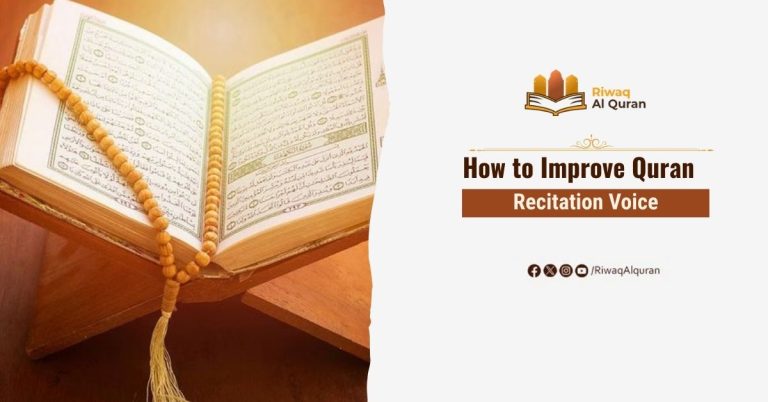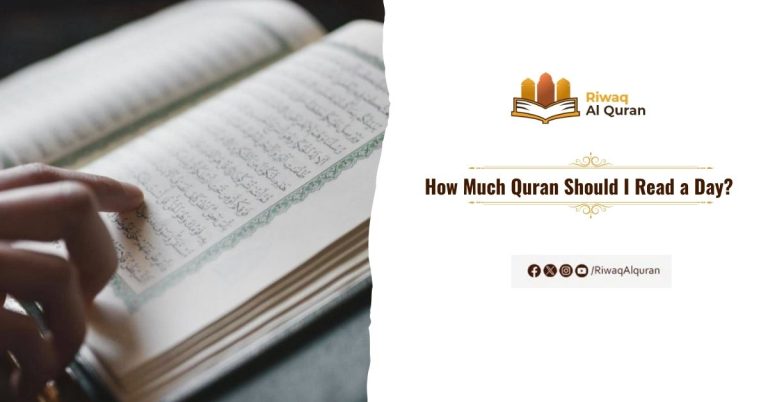To correctly pronounce any letter, you should be well aware of its exact articulation-exist (Makhraj). That is why, for an accurate recitation of Qur’an, you need to master the lesson of Makharij, as this lesson shows you from where exactly the Arabic letters are precisely articulated.
There are two Makharijs for the letter, one is the general Makhraj -which it shares with a group of letters- and the other is the particular- that exclusive articulation-point of the intended letter. Here, we are going to know about the throat-letters, their articulation-points, and the common mistakes when pronouncing them.
Table of Contents
The Throat-Letters
The “throat-letters” are the six, emphatic letters: (ء، ه، ع، ح، غ،خ) whose general Makhraj is the throat. They are some consonant sounds in Arabic that are pronounced with a distinctive emphasis, and deep
echo coming from the throat.
Throat is the general Makhraj of those letters, as those six letters are produced from somepoint in the throat. There are three sub-Makhrajs, representing their exact articulation-points. Have a look at this:

1. Letters Of Adna Al-Halq (The Nearest of the Throat):
The nearest part of the throat (to the tongue) is the particular Makhraj of two letters (خ) /kh/, and (غ) /gh/. It is crucial, when pronouncing غ, خ, not to mix that upper part of the throat with the inner-mouth part. Producing the sound of /gh/ is similar to the /kh/, yet the غ-articulation-point is below that of خ.
2. Letters Of Wassat Al-Halq (The Middle of the Throat):
The middle part of the throat is the particular Makhraj of the two letters (ح) /ha/, and (ع) /’a/.
It is important to not mix ح with ه, as they are two different letters and sounds in the Arabic language. The sound of ح , is more like letting the air flow out of the mouth wide open, coming out through the throat, like when eating something really spicy! While ه /ha/ is the same as the letter h in English.
The articulation-point of ح is slightly above that of ع.
3. Letters Of Aqsa Al Halq (The Furthest of the Throat):
The furthest/ deepest part of the throat is the Makhraj of the two letters (ء)/A/, and (ه) /ha/. That particular articulation-point of ه is just above that of hamza ء .


Common Mistakes When Pronouncing the Throat-Letters:
There are some common mistakes that the learner may make when pronouncing those throat-letters, like:
1. Mispronouncing the Sound of Hamza (ء), or Skipping It:
The learner may pronounce ء heavily, although it should be a light throat-letter; that happens mostly when hamza precedes a heavy letter, like in أضغانكم /Aadhghanakum/; hamza here precedes ض, a heavy letter, so some may mistakenly pronounce hamza heavily, while you should not.
The learner may skip the clear articulating of the hamza sound, especially when it comes at the end of the word, and after a madd-letter, like in ماء /maa’/, or in two words like, after a madd-letter, like يا أيها /ya ‘Ayyuha/, while you should accentuate it clearly.
2. Mispronouncing the Sound of (ه), or Skipping It:
It is common to make the mistake of pronouncing ه heavily, although it should be a light throat-light letter; that happens often when it is close to a heavy letter, like ط in مطهرة /mutahara/
Also, some may skip pronouncing the distinctive sound of ه , when it comes at the end, or when pausing, like كتابيَه /Kitabiya/, while it should be pronounced /kitabiyah/- or when there is two ه in the word, like يوجهُهٌ that should be pronounced /yuwajihuhuh/.
3. Mispronouncing the Sound of letter Ayn ع:
One can mistakenly pronounce ع heavily, especially when it comes with a heavy letter, like عصوا /’asaw/- while ع should be pronounced lightly.
Letter Ayn ع can be mistakenly skipped or replaced with the sound of ح in pronunciation, when it comes with the throat-letter ه, like: ألم أعهد /Alam a’hd/- as ح is close enough.
Some may mispronounce ع , pronouncing it similarly as hamza ء in some words, like: يعلمون /ya’lamonn/- it happens with non-natives of Arabic, alot.
4. Mispronouncing the Distinctive Sound of ح, or Skipping it:
The most common mistake when pronouncing ح is to pronounce it as ه /ha/, like الرحمن /Al Rahman/; letter ح is a special letter in the Arabic language that is different than ه.
Skipping its distinctive sound, when it is followed by letter ع, as they both came from the same Makhraj, like فاصفح عنهم / fassfah ‘anhum/ people may mispronounce it as /fassfa’anhum/.
5. Mixing Up the Sound of غ with Others:
Some may skip the sound of غ, when it comes followed by another letter, like ق, like لا تزغ قلوبنا: it should be pronounced /la tazigh Qulubana/ not /la taziqulubana/.
Many mix up the sound of غ /gh/ with the sound of خ /kh/ like يغشى should be /yaghsha/ not /yakhsha/ which is a totally different word!
Mistakenly, applying qalqalah to غ, when it is with sukoon, like المغضوب عليهم /al maghdhoob ‘alihim/.
6. Mixing Up the Heavy Sound with The Light Sound of Khaa:
With fat-ha and damma, khaa should be pronounced heavily with tafkheem like in خالدين, mistakenly, some people pronounce it lightly in those cases.
With kasra, we apply the lowest level of tafkheem on خ, like in خِيفة /Khifa/, some miss that point, and still pronounce it heavily while they should not.
Read Also: Rules of Raa’ (Tafkheem and Tarqeeq Of Raa)


Learn Quran, Arabic And Islamic Studies Online With The Best Native Tutors
Riwaq Al Quran is a comprehensive online platform that offers personalized Quran, Arabic and Islamic Studies Online classes for individuals of all ages and backgrounds.
Their experienced instructors use a structured curriculum to cover Tajweed, Tafsir, and Memorization, providing easy and effective access to learning the Quran.
The advanced online classes allow for seamless communication and interaction between students and teachers. Join Riwaq Al Quran for a deeper connection with the Quran.
We offer several courses such as:
- Online courses for kids.
- Online Quran classes for kids and adults.
- Online Arabic courses
- Online Ijazah courses
- Online Islamic Studies courses.
Here are a sample of our set of Quran Courses that will be helpful for you:
- Online Tafseer Course: Delve into Quranic meanings with our insightful online Tafseer course.
- Noorani Qaida Online: Learn Quranic basics efficiently through our Noorani Qaida online program.
- Online Quran Recitation Course: Enhance Quranic recitation skills through our expert-led online course.
- Online Tajweed Classes: Master Tajweed rules for beautiful Quranic recitation in online classes.
- Quran Memorization Online Course: Memorize the Quran effectively with our specialized online memorization course.
- Online Qirat Course: Explore diverse Qirat styles with our comprehensive online Qirat course.
- Online Quran Classes for Kids: Nurture a love for the Quran in kids through interactive online classes.
Conclusion:
The throat-letters are those six, emphatic letters (ه، ء، ع، ح، غ، خ). Each letter of them has a distinctive articulation-point and its own characteristics of pronunciation that should be followed precisely, not to mix them up with one another.
Some learners, the non-Arabic-natives, may get confused about some letters like ح, خ, ع, as those letters’ pronunciation is different exclusive to the Arabic language, in one way or another. So, it is highly recommended to ask the help of a specialized, Arabic-native teacher, like in Riwaq Academy, to instruct you properly and correct you, through clarifying examples and intense practice, till you can master the precise pronunciation.


































